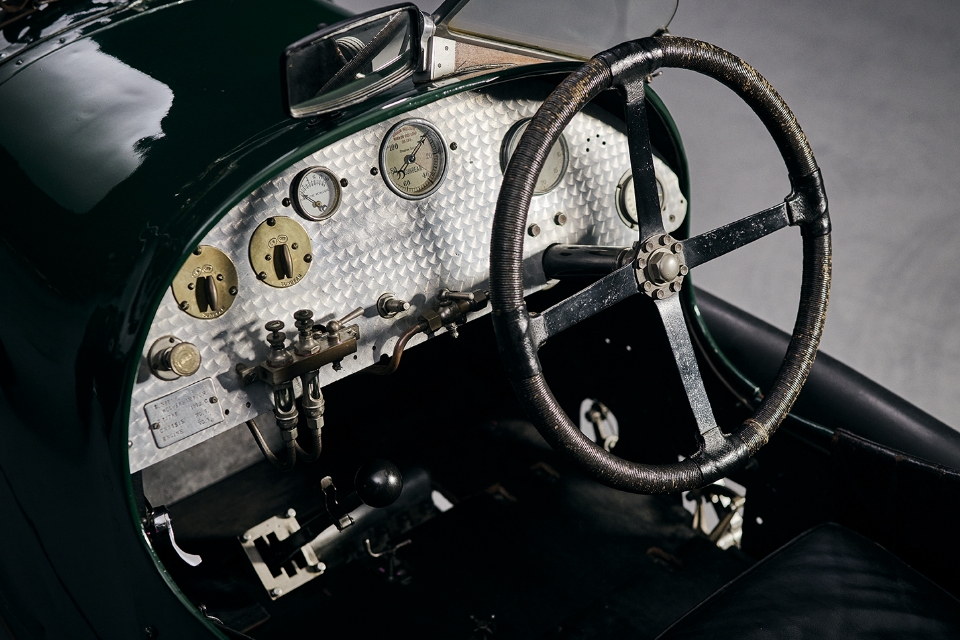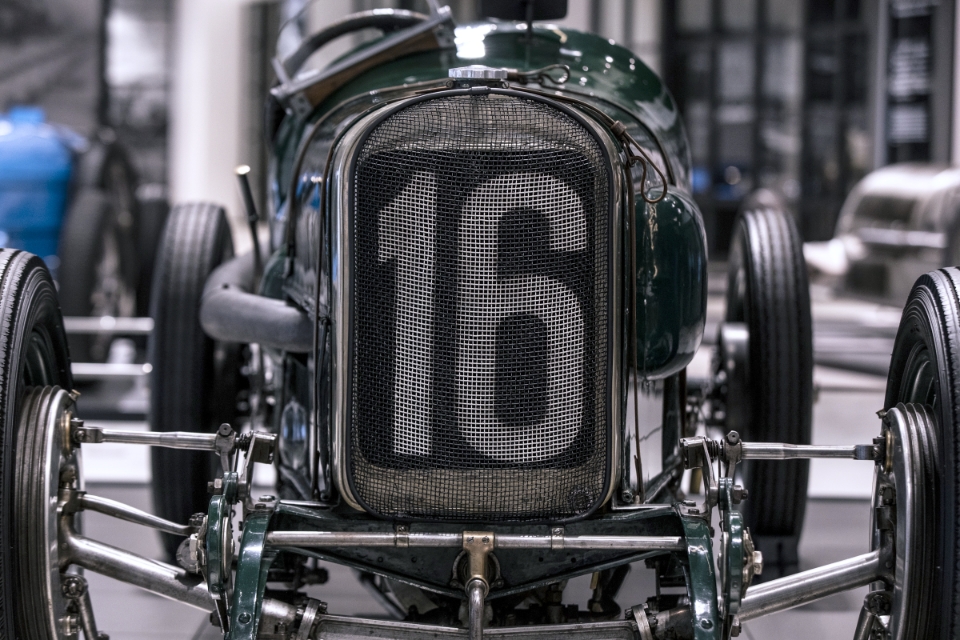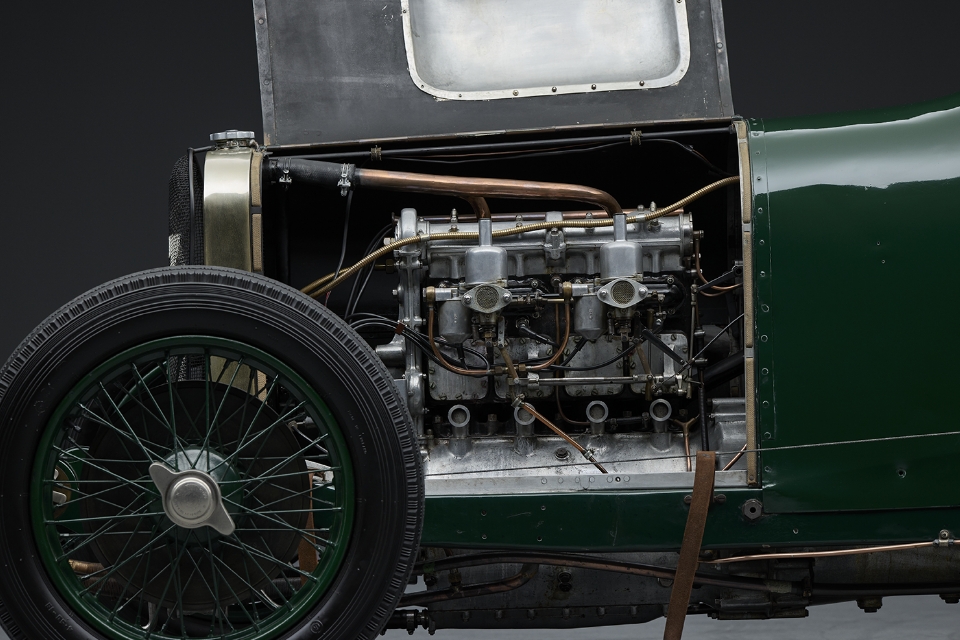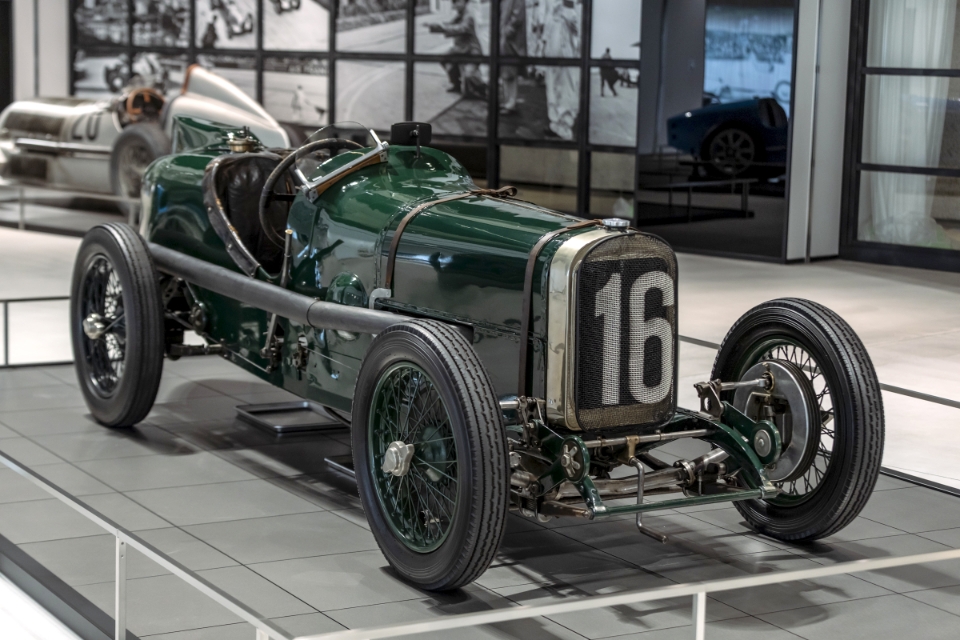
SUNBEAM GRAND PRIX
Sunbeam was founded in 1897 as a bicycle manufacturer and expanded into automobile manufacturing in 1900. In 1907, Sunbeam entered into racing, believing that motorsports technology was essential to the development of luxury cars, and achieved great success in major races. It was Hillman engineer Louis Coatalen who moved to Sunbeam in 1909 who helped further development, bringing most of the parts production in-house. Coatalen believed that motorsports can foster excellence and followed the mantra of "racing improves the breed."
The car on display is one of four built for the Strasbourg Grand Prix in 1922, after World War I when the race was run under new regulations requiring engines no larger than 2 liters and a minimum car weight of 650 kilograms. It was the first British car to use a DOHC 4-valve engine as its power unit and was characterized by its streamlined aluminum body with a longitudinal spare wheel mounted in the rear. The Sunbeam also featured front wheel brakes, which previously had been through to interfere with steering. However, Sunbeam was able to prove that front brakes were necessary to shorten the braking distance. Today front-wheel brakes are widely used in automobiles, showing how what is created through motorsports can be carried into the mass market.
| Vehicle Data |
|
|---|---|
| Exhibition Period | 07 Oct 2022~ |





